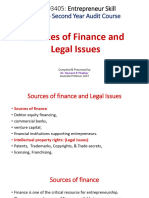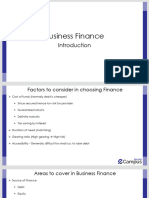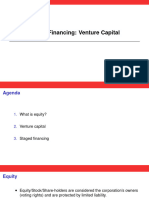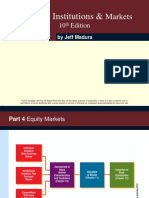0% found this document useful (0 votes)
18 views38 pagesWeek3 Lecture Notes Financials
The document discusses various sources and types of funding available to companies, including venture capital, private equity, and financial markets. It outlines the characteristics, benefits, and drawbacks of each funding type, such as initial public offerings (IPOs), private placements, and rights issues. Additionally, it explains the distinctions between debt and equity financing, as well as hybrid securities like preference shares and convertibles.
Uploaded by
namnguyenn.120302Copyright
© © All Rights Reserved
We take content rights seriously. If you suspect this is your content, claim it here.
Available Formats
Download as PDF, TXT or read online on Scribd
0% found this document useful (0 votes)
18 views38 pagesWeek3 Lecture Notes Financials
The document discusses various sources and types of funding available to companies, including venture capital, private equity, and financial markets. It outlines the characteristics, benefits, and drawbacks of each funding type, such as initial public offerings (IPOs), private placements, and rights issues. Additionally, it explains the distinctions between debt and equity financing, as well as hybrid securities like preference shares and convertibles.
Uploaded by
namnguyenn.120302Copyright
© © All Rights Reserved
We take content rights seriously. If you suspect this is your content, claim it here.
Available Formats
Download as PDF, TXT or read online on Scribd
/ 38
























































































